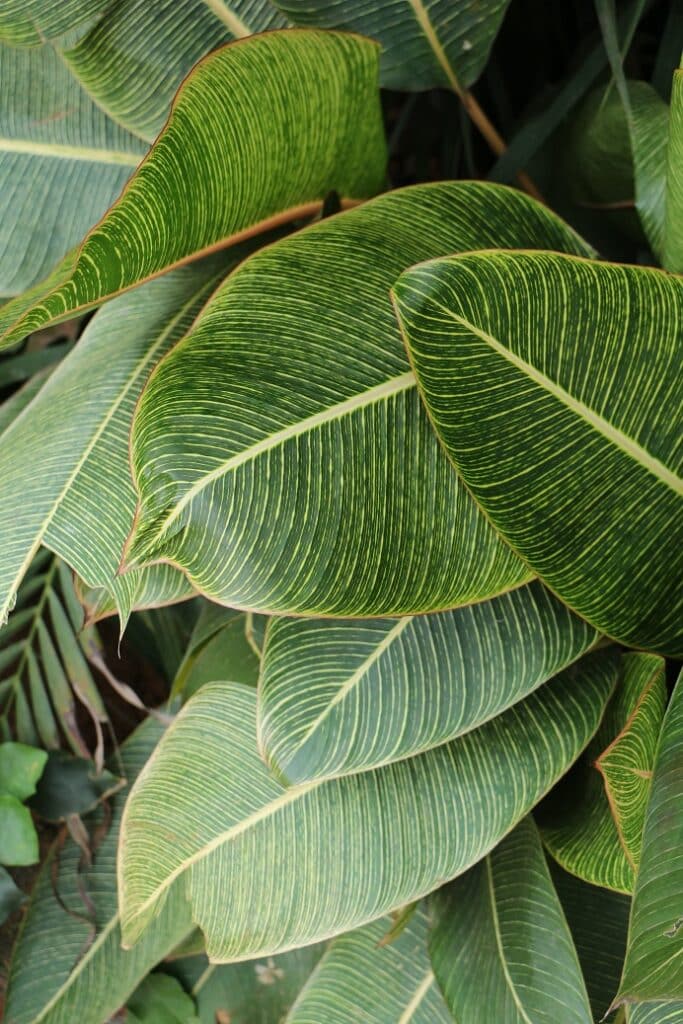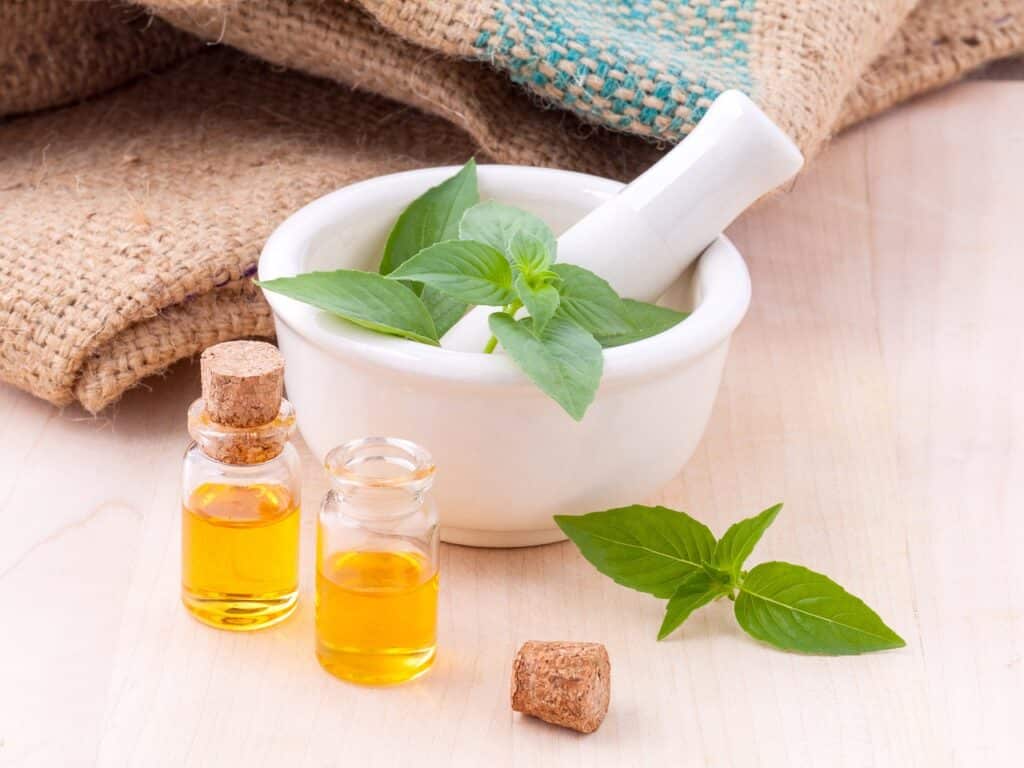Can I use indoor soil for outdoor plants? If you’re an avid indoor gardener looking to venture into the world of outdoor gardening, you may be wondering if you can use the same soil for both types of plants.
The answer is not as straightforward as you might think. The basic composition is a common ground for indoor and outdoor soil, but it’s crucial to consider key differences. In this article, we will explore the factors that determine whether or not you can successfully use indoor soil for your outdoor plants. From understanding the importance of drainage to the potential risks of using indoor soil outdoors, we will provide you with everything you need to know to make an informed decision about your gardening endeavours.

Types of Soil
When it comes to gardening, understanding the different types of soil is essential for successful plant growth. There are two main types of soil that gardeners often work with: indoor soil and outdoor soil. Indoor soil is typically used for potted plants and is designed to be used indoors, while outdoor soil is used for plants that are grown outside in garden beds or in the ground. Each type of soil has its own unique characteristics and considerations that gardeners should be aware of.
Indoor Soil
Indoor soil, also known as potting soil or potting mix, is specifically formulated for use in containers and indoor plantings. It typically consists of a mixture of organic materials such as peat moss, compost, and vermiculite or perlite, which retain moisture and provide nutrients to the plants. Indoor soil is lightweight and well-draining, preventing waterlogging, making it ideal for use in pots and containers. It also often undergoes sterilization to eliminate any weed seeds or pathogens that may be present.
Outdoor Soil
On the other hand, outdoor soil refers to the soil found in garden beds or the ground where plants are directly planted. This type of soil can vary widely depending on the region and location, but it generally consists of a combination of sand, silt, clay, and organic matter. Outdoor soil is more robust and is intended for plants to establish deep roots and withstand the outdoor elements. It typically contains a natural ecosystem of microorganisms and beneficial organisms, as it is not typically sterilized like indoor soil.
Differences Between Indoor and Outdoor Soil
Understanding the differences between indoor and outdoor soil is crucial for gardeners to choose the right soil type for their plants. Here are several key factors that differentiate indoor soil from outdoor soil:
Composition
The composition of indoor soil and outdoor soil varies significantly. Indoor soil is specifically formulated to provide the necessary nutrients and drainage for potted plants. It often contains more organic matter to promote healthy root development. Outdoor soil, on the other hand, is naturally occurring and consists of a mixture of mineral particles, organic matter, and microorganisms.
Nutrient Levels
Indoor soil typically contains higher nutrient levels compared to outdoor soil. This is because potting mixes are designed to provide plants with a steady supply of nutrients since they cannot draw nutrients from the surrounding environment like plants grown in outdoor soil. Outdoor soil relies more on adding compost and other organic amendments to maintain nutrient levels.
Drainage
Proper drainage is critical for plant health, and the drainage characteristics of indoor and outdoor soil differ. Indoor soil is designed to drain excess water quickly to prevent root rot and waterlogging. It often contains materials like perlite or vermiculite, which help improve drainage. Outdoor soil, however, can vary widely in terms of drainage, depending on factors such as soil type and compaction.
pH Levels
The pH levels of indoor and outdoor soil can also differ significantly. Indoor soil is often adjusted to a neutral pH of around 6.5 to 7, which is considered optimal for most houseplants. Outdoor soil, on the other hand, can vary in pH depending on factors such as the location and underlying geology.
Moisture Retention
Indoor soil is designed to retain moisture for potted plants, as they rely on regular watering. It often contains materials like peat moss that can hold moisture well. Outdoor soil, however, may have varying moisture retention capabilities depending on the composition and organic matter content.
Factors to Consider Before Using Indoor Soil for Outdoor Plants
While it may be tempting to use indoor soil for outdoor plants, there are several important factors to consider before doing so. It is crucial to take into account the specific plant types, climate conditions, and the need for soil amendments.
Plant Types
Certain plant types may not fare well with indoor soil when grown outdoors. Some plants, like cacti and succulents, require well-draining soil with minimal moisture retention. Using indoor soil, which tends to hold more moisture, can lead to root rot and other issues. On the other hand, plants that prefer moisture retention, such as ferns or tropical plants, may thrive when planted outdoors with the use of indoor soil.
Climate
Climate plays a significant role in determining the suitability of using indoor soil for outdoor plants. If you live in an area with high humidity or heavy rainfall, the moisture retention characteristics of indoor soil may not be ideal, as it can lead to excess moisture and root rot. Similarly, if you live in an arid region, the moisture-holding capacity of indoor soil may be beneficial for outdoor plants.
Soil Amendments
Before using indoor soil for outdoor plants, consider whether any necessary soil amendments are required. Outdoor soil may benefit from the addition of compost, sand, or other organic matter to improve drainage or nutrient levels. Evaluating the existing soil conditions and making the necessary amendments can help create a more suitable environment for the plants.
Advantages of Using Indoor Soil for Outdoor Plants
While using indoor soil for outdoor plants has its considerations, certain advantages make it a viable option for some gardeners. Let’s explore these advantages in more detail:
Consistency
One of the advantages of using indoor soil for outdoor plants is the consistency it provides. Indoor soil is typically manufactured to meet specific standards, ensuring a consistent quality that can benefit plants. This consistency helps avoid the potential variability of outdoor soil, which can vary in texture, composition, and quality in different areas.
Disease Prevention
Indoor soil is often sterilized to eliminate potential pests, weed seeds, and pathogens. Using sterilized soil for outdoor plants can help prevent the introduction of harmful pests and diseases into your garden. This is especially important if you have had issues with pest infestations or diseases in the past.
Easy Management
Managing indoor soil is generally easier compared to outdoor soil. With outdoor soil, you need to constantly monitor and amend the soil based on the specific needs of the plants. Indoor soil, however, provides a more controlled environment, making it easier to regulate watering, nutrient levels, and overall plant care. This can be particularly beneficial for beginners or those with busy schedules.
Disadvantages of Using Indoor Soil for Outdoor Plants

While there are advantages to using indoor soil for outdoor plants, there are also some disadvantages that must be considered. These include limited nutrients, moisture retention issues, and drainage problems.
Limited Nutrients
Indoor soil is formulated to provide adequate nutrients for potted plants, but it may not provide sufficient nutrients for plants grown outdoors. Garden beds and outdoor environments typically require a more varied nutrient profile, which can be achieved through the addition of organic matter, compost, or fertilizer. Relying solely on indoor soil may result in nutrient deficiencies in outdoor plants over time.
Moisture Retention
Indoor soil is designed to retain moisture for potted plants, but this characteristic may not be suitable for all outdoor plants. Some plants require well-draining soil to prevent waterlogged roots, which can lead to root rot and other problems. If your outdoor plants prefer drier conditions, using indoor soil with higher moisture retention may harm their health.
Drainage Issues
The drainage characteristics of indoor soil may not be optimal for all outdoor plants. Some plants thrive in sandy or well-draining soil, while others require soil with good water retention. Depending on the specific needs of your outdoor plants, you may need to amend the indoor soil to improve drainage or consider using alternative soil options.
Preparing Indoor Soil for Outdoor Use
If you decide to use indoor soil for outdoor plants, it is crucial to take specific steps to prepare the soil and ensure its suitability for the outdoor environment. This involves testing the soil, amending it as needed, and improving drainage.
Testing Soil
Before using indoor soil outdoors, it is essential to test its pH levels and nutrient content. A simple soil test kit can provide valuable information about the soil’s pH, as well as levels of essential nutrients such as nitrogen, phosphorus, and potassium. Based on the test results, you can make any necessary adjustments before planting your outdoor plants.
Amending Soil
Depending on the test results and the requirements of your outdoor plants, you may need to amend the indoor soil for optimal growth. Adding organic matter, such as compost or well-rotted manure, can help improve nutrient levels and enhance the soil structure. Sand or perlite can be incorporated to improve drainage, especially if the indoor soil tends to retain too much moisture.
Improving Drainage
If the indoor soil has poor drainage, it is essential to address this issue before using it for outdoor plants. Incorporating materials like vermiculite or perlite can improve drainage by increasing air space within the soil. Alternatively, adding coarse sand or gravel to the soil mix can improve drainage and prevent waterlogging.
Acclimating Plants to Outdoor Conditions
Once the indoor soil has been prepared and amended for outdoor use, it is important to acclimate the plants gradually to the outdoor conditions. Sudden exposure to harsh sunlight and environmental changes can shock plants, leading to stress and potential damage. To avoid this, follow these steps to transition your plants to the outdoors gradually:
Gradual Transition
Start by placing your potted plants with indoor soil outdoors in a shaded area for a few hours each day, gradually increasing the amount of time spent outdoors over the course of a week or two. This helps the plants adjust to increased sunlight, temperature fluctuations, and wind exposure. This gradual transition will minimize the risk of transplant shock and help your plants thrive outdoors.
Sunlight Exposure
Indoor plants are often accustomed to lower light levels compared to outdoor conditions. Therefore, it is important to acclimate your plants to increased sunlight gradually. Start by placing them in an area with partial shade and gradually increase their exposure to direct sunlight over a few weeks. This will allow the plants to adjust and prevent sunburn or leaf damage.
Alternatives to Using Indoor Soil for Outdoor Plants
While using indoor soil for outdoor plants can be an option, there are alternatives available that may better suit your gardening needs. Here are two alternatives to consider:
Purchasing Outdoor Soil
If you have reservations about using indoor soil outdoors or if your outdoor plants have specific soil requirements, purchasing outdoor-specific soil can be a viable option. Many garden centers and nurseries offer various outdoor soils, from general-purpose potting mixes to specialty soil blends for specific plant types. Purchasing outdoor soil ensures that you are using a product specifically designed for the needs of outdoor plants.
Creating a Custom Outdoor Soil Mix
Another alternative is to create a custom outdoor soil mix by combining indoor soil with other ingredients. This allows you to tailor the soil composition according to the specific needs of your outdoor plants. Adding compost, sand, perlite, or other organic matter to the indoor soil can help improve drainage, nutrient levels, and soil structure. Experimenting with different ratios and combinations can help create a custom soil mix that suits your gardening preferences.
Top Tips for Successful Outdoor Planting with Indoor Soil

If you decide to use indoor soil for your outdoor plants, here are some top tips to ensure successful planting and growth:
Choose Suitable Plants
Select plants that are well-suited to the characteristics of indoor soil, such as those that prefer higher moisture levels or plants that can tolerate more frequent watering. Consider the specific needs of the plants you wish to grow and ensure that the soil’s moisture retention and drainage characteristics align with those needs.
Monitor Soil Moisture
Regularly monitor the moisture levels in the soil to ensure that it is suitable for your outdoor plants. Avoid overwatering or allowing the soil to dry out completely, as both can lead to stress and damage. Adjust your watering routine as necessary based on the specific requirements of your plants and the moisture-retention capabilities of the indoor soil.
Regular Soil Testing
Continue to monitor the pH levels and nutrient content of the soil using soil testing kits. This will help you identify any nutrient deficiencies or imbalances and allow you to make timely amendments to maintain optimal plant health. Regular soil testing is essential for indoor soil, as nutrient levels may deplete more quickly than outdoor soil.
Conclusion
Using indoor soil for outdoor plants can be a viable option under certain circumstances. By understanding the differences between indoor and outdoor soil, considering key factors, and taking necessary preparatory steps, you can successfully use indoor soil for your outdoor gardening endeavours. However, it is important to remain mindful of the limitations and disadvantages that indoor soil may present and to make any necessary adjustments or amendments to ensure the health and vitality of your outdoor plants. With proper care, attention, and suitable plant selection, you can create a thriving outdoor garden using indoor soil. Happy gardening!




